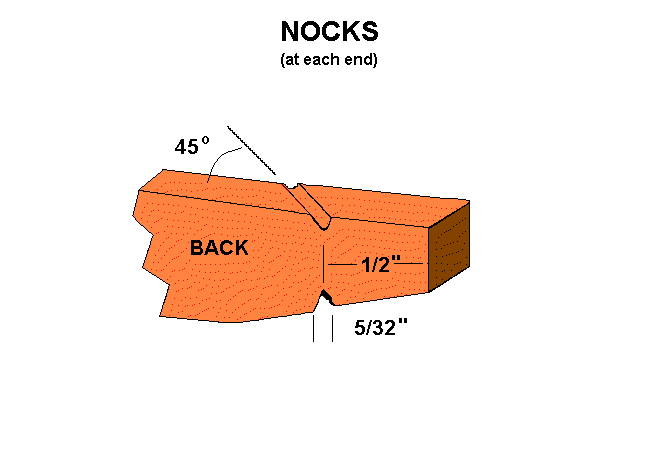
| |
 |
![]()
Final nocks can be cut 1/2" in from the end of each limb, sloping at a 45-degree angle from back to belly, using something like a 5/32" circular rasp, pocketknife or 4 mm chain saw sharpening file. Care must be taken to keep the back of the bow as clean as possible, i.e. it should not be cut or worked at all when fitting the nocks. To do so is likely to cut the growth rings, weakening the limb.

As an alternative, many longbows are fitted with antler or horn nocks, slid over the end of each limb and glued in place. This helps protect the wood from abrasion from the bowstring and is also quite decorative. To make these, take a section of antler or horn of up to 4" long and 1/2"-3/4" across at the base. The end of the limb should be shaped into a cone shape for about the end 1/2" of wood, and the base of the antler nock drilled out to fit. File or cut nocks into the antler, then spread a strong waterproof woodworking glue onto the end of the limb and slide the shaped antler nocks on, holding them firmly in position until the glue has set. Also, as another alternative to cut nocks, it is possible to tightly wrap sinew (or cord) around the nocking points of the bow and glue it in place. The string is then slid over the ends and held in place by the loop of sinew.
Offered by Brian.